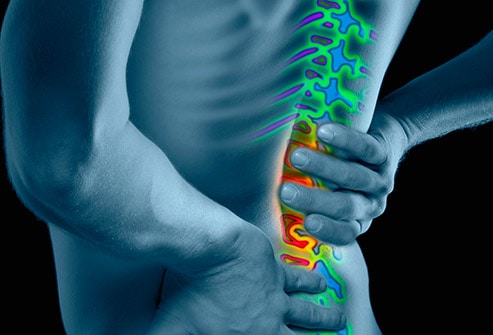
We’re all likely to experience back pain at some point in our lives, some back pain will go away on it’s own and some types of back pain can stick around for years. Back pain is the leading cause of disability in men over 45 years old and the second most common reason for a visit to the GP. The way we treat our back pain makes a difference to the healing process. Following the advice from some of these myths about back pain can mean we do more harm than good to our spine.
1. Paracetamol will help back pain.
For years GP’s have told their patients to take paracetamol to help with back pain. According to medical journal The Lancet, paracetamol showed no benefits to back pain in a study of 1,600 participants. Professor Maher, who conducted the study said that there was also very little evidence to suggest that non-steroidal alternatives such as ibuprofen are very effective on back pain. So if your back pain is not responding to over the counter pain killers, don’t panic, visit your GP for other options.
2. Back pain can be fixed with bed rest.
People who are experiencing back pain tend to become over protective of the painful area. They move around less and try getting extra rest to fix the problem. The Norwegian Center for Health Studies reviewed the success of bed rest for back pain in 2010 and found that the group of patients who stayed active showed a higher reduction of back pain than the patients who received bed rest. They also had a better ability to move around and function.
While it is tempting to crawl into bed when you’re in pain, it’s important to keep mobile and do light exercise. A physiotherapist will be able to introduce gentle stretching exercises into your routine which will help you lower your pain levels and increase your mobility.
3. Back pain is just a part of life.
Even though back pain is common, it shouldn’t be seen as a normal part of life. Some people grow used to the fact that their back is ‘gone’ and accept that it will always be painful. In fact, there are numerous potential causes and explanations to why your back may be painful and there are many ways of treating it. At Sheffield Physiotherapy, we have encountered plenty of people who have had back pain for years and gone on to have successful treatment that means they can get back to activities they once avoided. With all the advanced treatment options we have available to us today, back pain should never be tolerated as a ‘fact of life’.
4. Back pain is just part of the aging process.
Back pain is actually more common in people aged 30-50 than it is in older people, especially if it’s related to a disc problem such as a herniated or degenerated disc. If you are in this age group, you may have been worrying that your back will get worse with time until you are unable to move at all! The reality is, your pain can be improved with therapy and will not necessarily get worse with age.
5. The spine is easily injured.
The spine is a very tough structure of ligaments, bone and tendons. When a spine becomes injured, it is likely that there were other factors putting the spine at risk before the pain started. This could be from bad habits such as poor posture, inactivity, a lack of nutrition, or smoking. We have explained in other blogs what nutrients will keep your joints healthy and identified steps you can take to keep your back in good shape.
6. If your back is very painful, it must be very badly damaged.
With acute pain, the level of pain tends to indicate the level of damage. For example if you bump your head you will experience more pain if you hit it hard than from a soft bump.
With chronic pain lasting longer than six weeks, the amount of pain does not usually correlate to the amount of damage. You may be experiencing a severe amount of pain from a small, easily fixable problem, or you may have chronic pain which is a psychological reaction to a past injury that is now healed. Alternatively, your back may be very damaged but you only experience slight amounts of pain, or even no pain at all. The only way to tell how damaged your back is, is to get a thorough diagnosis from a physiotherapist.
7. If you have a severe back problem, surgery is the only option.
Only a very small percentage of people with back pain will require surgery. Surgery can be used successfully for certain candidates. It can correct deformities, reduce pain and improve function. However, not everyone who has had spinal surgery finds a good improvement in their pain. In cases where the patient is a smoker or has another issue contributing to their condition – such as a spinal misalignment, surgery will not be able to fix the problem entirely. IDD therapy and PAMM therapy can be successful alternatives to surgery and we can provide them at our clinic.
If you’re experiencing on-going back pain the best thing to do is make an appointment with a physiotherapist so you can get the problem assessed and treated quickly.

